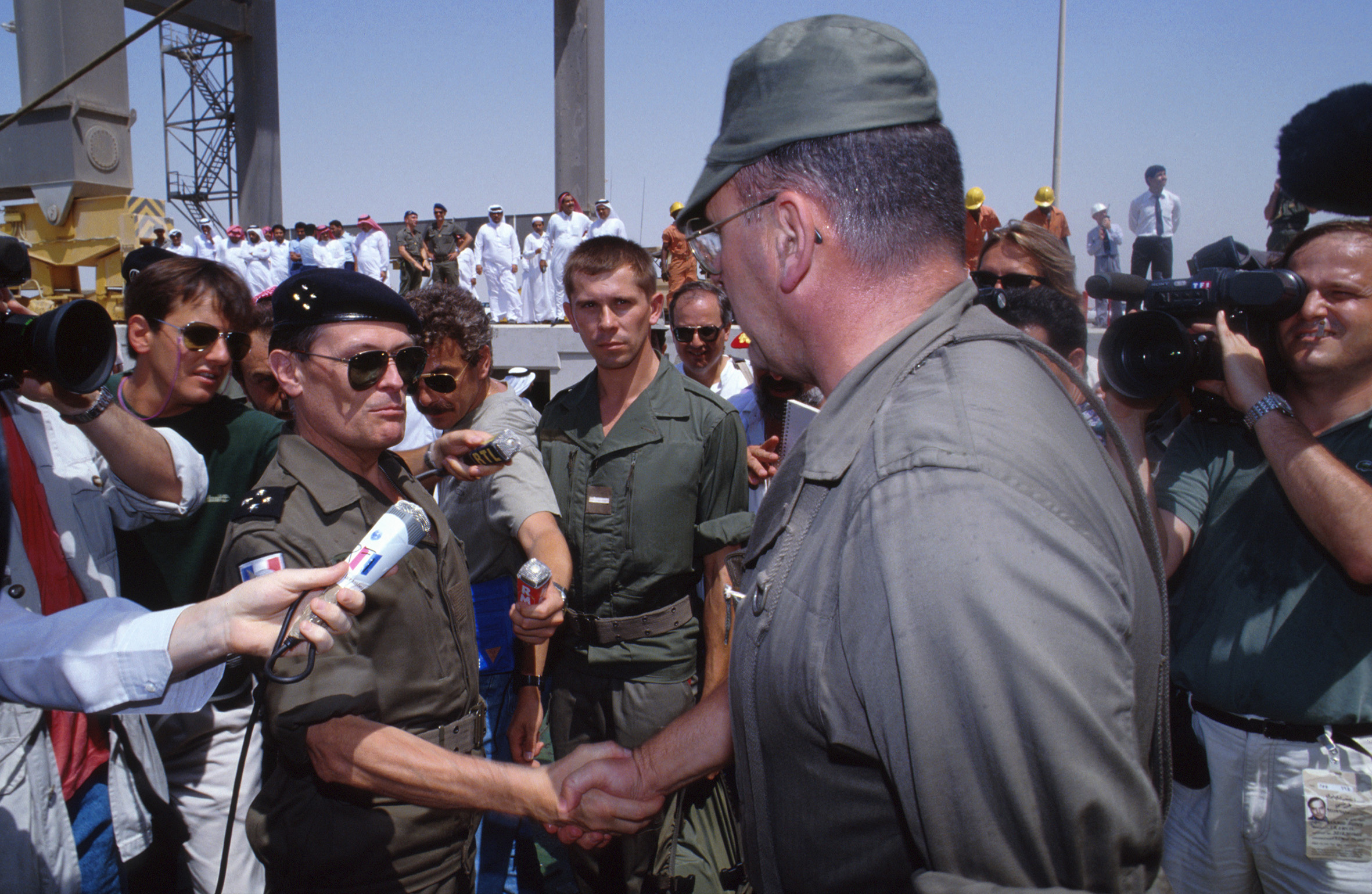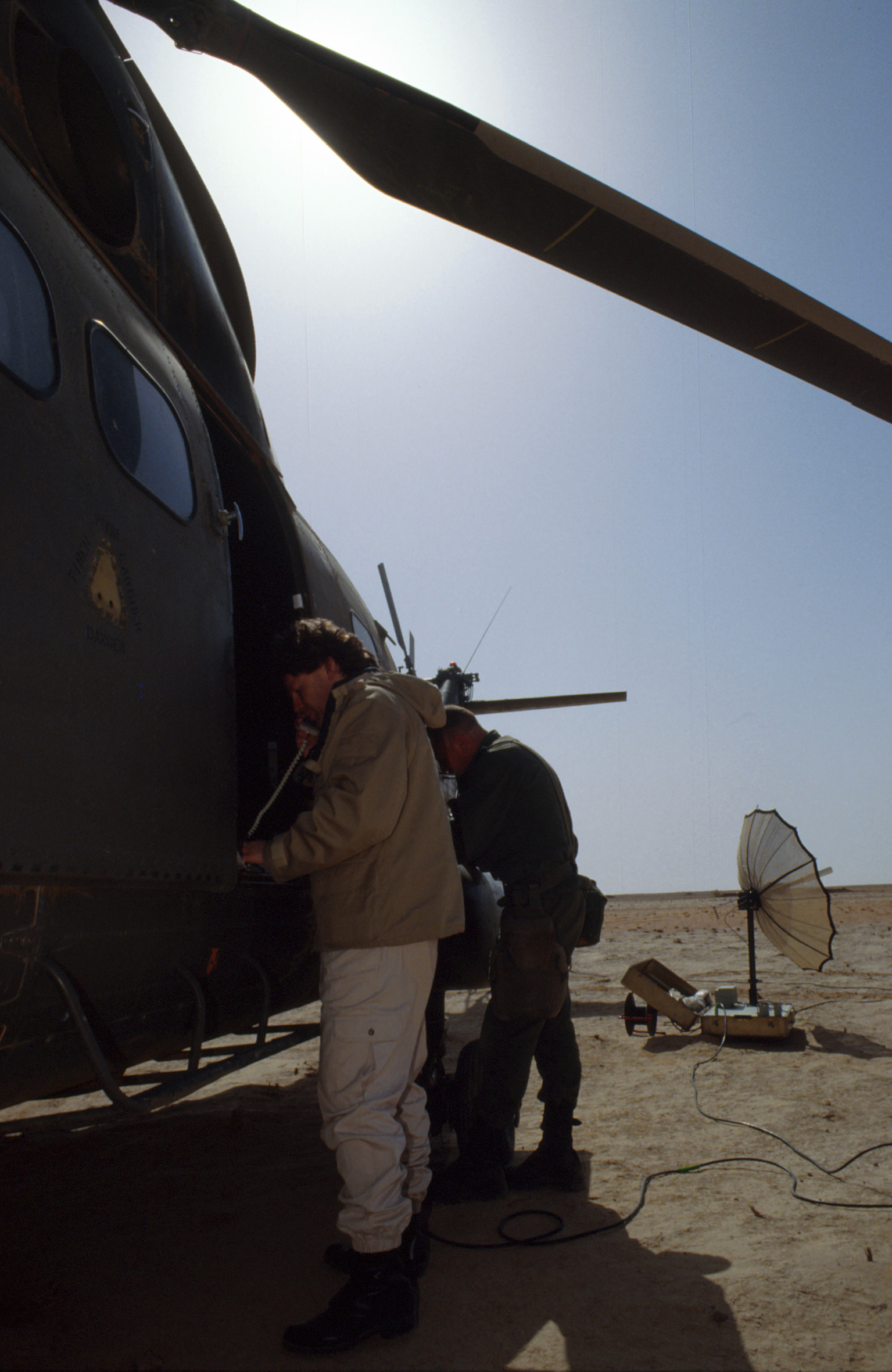The stakes of military-media relations during Operation Daguet
Information in high-intensity warfare is a sensitive issue. Communication is essential, but it is also important not to divulge operational secrets. During Operation Daguet, the media therefore had to be subjected to various controls.
Striking a balance in wartime
Information in times of high-intensity war is a delicate matter. As Guy Mollet reminded us, " an army that did not live in close symbiosis with the nation would immediately be lost, isolated and inward-looking. 1 It is therefore essential to communicate about what is happening on the ground in order to reassure the population and obtain its support. This role of informant is generally played by civilian journalists. However, this imperative often proves to be a source of difficulty, since the search for information can sometimes be confused with intelligence and compromise operational secrecy. Indeed, the effectiveness of military actions depends on the surprise effect, and therefore on a minimum of discretion. This problem was all the more acute during the Gulf War because of live transmission and the public's need for information. A balance had to be struck between these two extremes.
Hiding to protect military secrecy
To avoid compromising operational secrecy, one of the most instinctive solutions is to hide information from journalists. This is what happened, for example, shortly before the ground offensive. Since Iraq was in possession of French aircraft purchased earlier, the army was asked to paint the invasion stripes (three white stripes) on the French Puma and Gazelle helicopters in order to instantly differentiate them and thus avoid fratricidal fire. However, for this strategy to work, this means of identification had to be kept secret. As soon as the rings were painted, civilian journalists came to visit the units. The soldiers then had no choice but to cover the invasion bands with their duvets in order to mask them.
If this solution was adopted in haste, the journalists' arrival was normally better prepared. Indeed, before their arrival, the soldiers who were going to face the journalists received instructions from their superiors as to what they could and should not say. But this organisation was often clumsy because of the overlapping of instructions, as Patrice, then platoon leader in the1st Spahis Regiment, recalls: " I was completely traumatised, because every time a journalist arrived, we were briefed by fifteen people. The captain, the corps commander, the regimental press officer, the divisional press officer, etc.]. And we found ourselves like fools in front of the journalist, cruelly lacking in naturalness and spontaneity.
Controlling journalists
However, keeping operational information secret was not a sure guarantee of confidentiality. Journalists could obtain this information by other means, or guess at it by their own observations. It was therefore important to control their publications as well so that no confidential information was included. A number of journalists were embedded in the French units of the Daguet Division, including during the ground offensive, in order to meet the army's communication requirements. But these journalists were permanently accompanied by press officers and their movements were limited, both for operational purposes and to guarantee their safety in a war zone with a constant chemical risk. Finally, a whole process had also been set up to study and validate their productions before broadcasting. Journalist Pierre Bayle, who covered the Daguet land offensive with the1st Spahis Regiment, sums it up as follows: " We had signed a document which was an undertaking to respect total confidentiality and to give our papers to the military authorities who then passed them on in Riyadh to the SIRPA [Service d'informations et de relations publiques des armées] who filtered them and then sent them back to Paris.
A balance at risk for future wars?
By trying to establish this balance in wartime and thanks to the lessons learned, the Gulf War has contributed to a structural improvement in relations between the media and the military. Training schools now teach the military how to communicate. Operational orders even include a communications annex, language and behaviour towards journalists. Moreover, two entities were created in 1998 to optimise military communication: the DICoD (Delegation for Defence Information and Communication) and the communication cell of the Chief of Staff of the Armed Forces.
However, these advances are now being challenged by the rise of new technologies, especially social networks, which threaten operational efficiency more than ever. The possibility given to everyone to be the sender of information, circulating instantaneously throughout the world without prior moderation, can become a valuable source of intelligence for the enemy in a high-intensity context. A new balance must be found.
-----------------------------------------------------------------
1 - Guy Mollet, 13 May 1958, 13 May 1962, Paris, Plon, 1962.
2 - Hubert Leroux, Antoine Sabbagh,Paroles de soldats. Les Français en guerre 1983-2015, Paris, Tallandier, 2015, p. 88
3 - Frédéric Bouquet, La conquête d'As Salman. La grande aventure de la division Daguet, Ecpad webdocumentary, 2012







